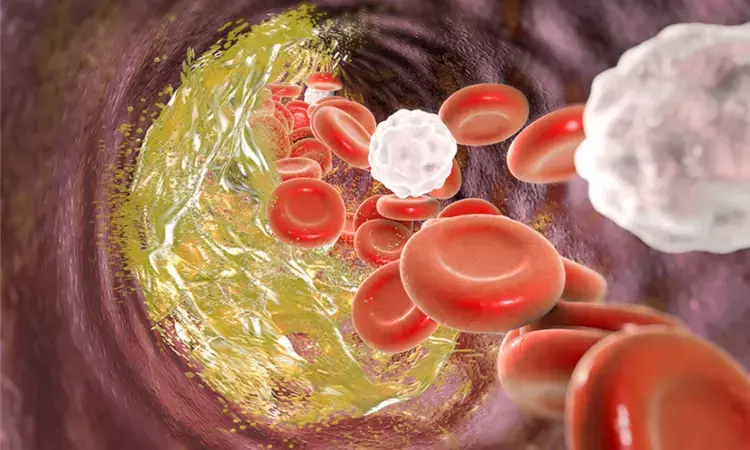- Home
- Medical news & Guidelines
- Anesthesiology
- Cardiology and CTVS
- Critical Care
- Dentistry
- Dermatology
- Diabetes and Endocrinology
- ENT
- Gastroenterology
- Medicine
- Nephrology
- Neurology
- Obstretics-Gynaecology
- Oncology
- Ophthalmology
- Orthopaedics
- Pediatrics-Neonatology
- Psychiatry
- Pulmonology
- Radiology
- Surgery
- Urology
- Laboratory Medicine
- Diet
- Nursing
- Paramedical
- Physiotherapy
- Health news
- Fact Check
- Bone Health Fact Check
- Brain Health Fact Check
- Cancer Related Fact Check
- Child Care Fact Check
- Dental and oral health fact check
- Diabetes and metabolic health fact check
- Diet and Nutrition Fact Check
- Eye and ENT Care Fact Check
- Fitness fact check
- Gut health fact check
- Heart health fact check
- Kidney health fact check
- Medical education fact check
- Men's health fact check
- Respiratory fact check
- Skin and hair care fact check
- Vaccine and Immunization fact check
- Women's health fact check
- AYUSH
- State News
- Andaman and Nicobar Islands
- Andhra Pradesh
- Arunachal Pradesh
- Assam
- Bihar
- Chandigarh
- Chattisgarh
- Dadra and Nagar Haveli
- Daman and Diu
- Delhi
- Goa
- Gujarat
- Haryana
- Himachal Pradesh
- Jammu & Kashmir
- Jharkhand
- Karnataka
- Kerala
- Ladakh
- Lakshadweep
- Madhya Pradesh
- Maharashtra
- Manipur
- Meghalaya
- Mizoram
- Nagaland
- Odisha
- Puducherry
- Punjab
- Rajasthan
- Sikkim
- Tamil Nadu
- Telangana
- Tripura
- Uttar Pradesh
- Uttrakhand
- West Bengal
- Medical Education
- Industry
Novel AI model enhances diagnosis of plaque erosion in patients with acute coronary syndromes

South Korea: A newly developed "transformer"-based DL (deep learning) model may help cardiologists accurately diagnose plaque erosion in patients with acute coronary syndromes (ACS), according to a recent study published in JACC: Cardiovascular Interventions.
In recent years, a concept that the underlying pathophysiology in some patients with acute coronary syndromes could be plaque erosion rather than plaque rupture has emerged. ACS caused by plaque erosion could be managed conservatively (reduction of thrombus burden followed by aggressive medical management with anti-platelet and lipid-lowering therapy) without stenting. However, this concept still needs to be fully supported by trial evidence.
Plaque erosion diagnosis requires expertise in OCT (optical coherence tomographic) image interpretation. In addition, the current DL approaches for OCT image interpretation are based on a single frame without information integration from adjacent frames. The key to furthering this concept is to recognise plaque erosion more easily in the acute clinical setting.
In the study, Sangjoon Park from the Korea Advanced Institute of Science and Technology in Daejeon, South Korea, and colleagues deployed a deep learning approach (called a "Transformer") that enables recapitulating to some degree the human method but incorporating information from multiple frames, and facilitate an accurate diagnosis of plaque erosion.
The novel "Transformer"-based DL model integrates information from adjacent frames emulating the cardiologists who review consecutive OCT frames to make a diagnosis and compare it with the standard CNN (convolutional neural network) DL model.
The researchers used a total of 237,021 cross-sectional OCT images from 581 patients for training and internal validation, and for external validation, 65,394 images from 292 patients from another dataset were used. Model performances were evaluated using AUC (area under the receiver-operating characteristic curve).
The study led to the following findings:
- For the frame-level diagnosis of plaque erosion, the Transformer model performed better than the CNN model, with an AUC of 0.94 compared with 0.85 in the external validation.
- For the lesion-level diagnosis, the Transformer model showed improved diagnostic performance compared with the CNN model, with an AUC of 0.91 compared with 0.84 in the external validation.
The results revealed that the novel transformer-based DL model could help in the accurate diagnosis of plaque erosion in patients with acute coronary syndromes and aid clinical decision-making -- making on potential conservative management without stenting in these patients.
Identifying plaque erosion reliably is an initial step to standing-up trials testing the hypotheses developed around more conservative non-interventional therapy. How this interesting automated approach performs when deployed more broadly will be of great interest.
Reference:
Park S, Araki M, Nakajima A, Lee H, Fuster V, Ye JC, Jang IK. Enhanced Diagnosis of Plaque Erosion by Deep Learning in Patients With Acute Coronary Syndromes. JACC Cardiovasc Interv. 2022 Oct 24;15(20):2020-2031. doi: 10.1016/j.jcin.2022.08.040. PMID: 36265933.
Dr Kamal Kant Kohli-MBBS, DTCD- a chest specialist with more than 30 years of practice and a flair for writing clinical articles, Dr Kamal Kant Kohli joined Medical Dialogues as a Chief Editor of Medical News. Besides writing articles, as an editor, he proofreads and verifies all the medical content published on Medical Dialogues including those coming from journals, studies,medical conferences,guidelines etc. Email: drkohli@medicaldialogues.in. Contact no. 011-43720751


